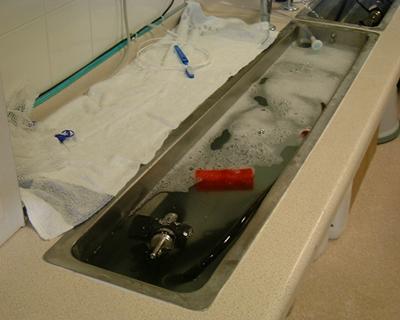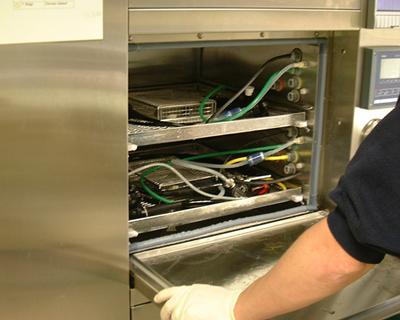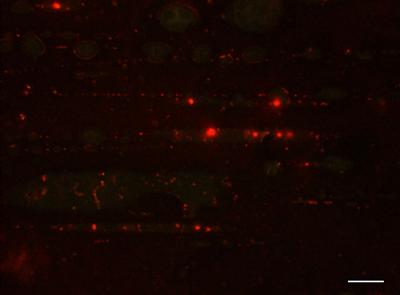Background
Flexible endoscopes are used intensively in clinical settings for diagnosis and other interventions. As they are partly made of plastic they cannot be autoclaved, so are cleaned between patients using chemical “high level disinfection”.


Existing decontamination technologies rely on either flow or pressure of water, sonication, addition of detergent or other chemicals, or a combination of these. Despite adhering to protocols there has been a number of outbreaks of hospital-acquired infections following endoscopic procedures. These have been caused by antibiotic-resistant bacteria such as Klebsiella pneumoniae carbapenemase producing strains (KPC) and extended spectrum beta lactamase (ESBL) which have survived the cleaning process. Due to the resistance of the infections to antibitotic treatment, these outbreaks have caused serious morbidity and mortality.
Our research
While bacteria have been found to survive reprocessing on the outside surface of endoscope complex distal tips, our own findings indicate that protein adsorption within endoscope channels provide the perfect ground for bacterial retention, growth and potential exchange of genetic material including resistance genes within biofilms.

We are currently investigating cold atmospheric plasma (CAP) as a method for channel decontamination. CAP generates transient free radicals which have shown to be very effective against proteinaceous and bacterial contamination in previous studies.
However we've observed that when CAP is generated within endoscope channels the plasma distribution within the channel is not homogeneous. This can leave many areas of the channel untreated and potentially infectious.
Our study aims to optimise the action of CAP.
Thanks to NAMRIP we are collaborating with local engineers within the University of Southampton to perform flow field analysis, characterise the flow of plasma inside channels and correlate the flow behaviour to the performance of CAP flowing within the channel.
Flow modelling and the optimisation of flow within endoscope channels could prove critical in optimising both existing and emerging decontamination methods and reducing the risk of infection.
NAMRIP Project Team
The project brings together experts in the fields of surgical instruments reprocessing, plasma decontamination and microfluidics - Dr Rod Herve (Project Lead), Dr Robert Zmijan, Dr Xunli Zhang and Professor Bill Keevil.
This two-month pilot project “Examining and optimizing flows in endoscope working channels to improve reprocessing efficacy using cold atmospheric plasma” is funded by the EPSRC Network for Antimicrobial Action, 'Bridging the Gap' programme, EP/M027260/1 (Round 3 of NAMRIP Pump Priming).